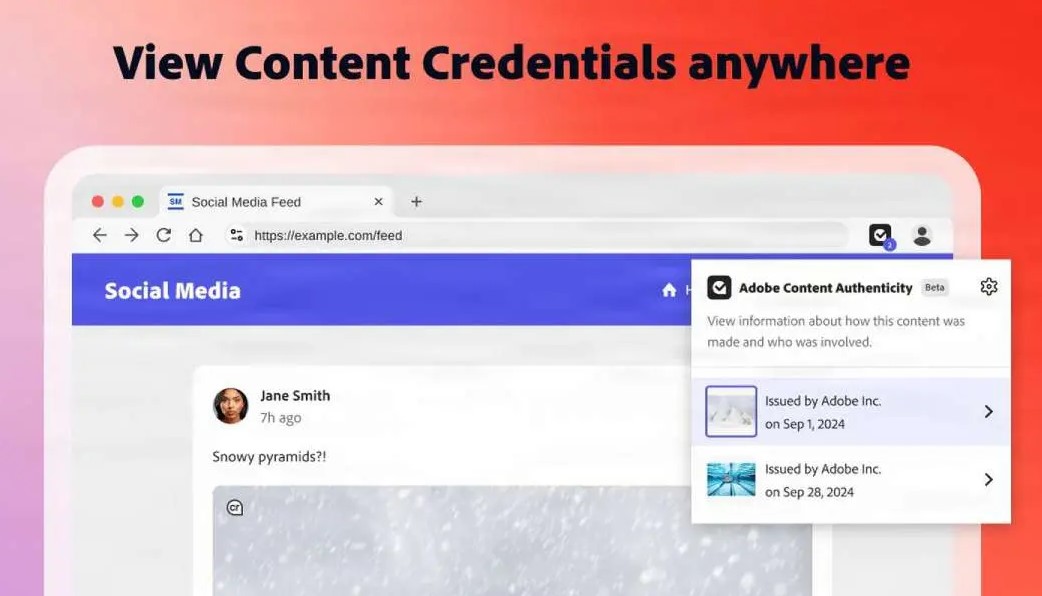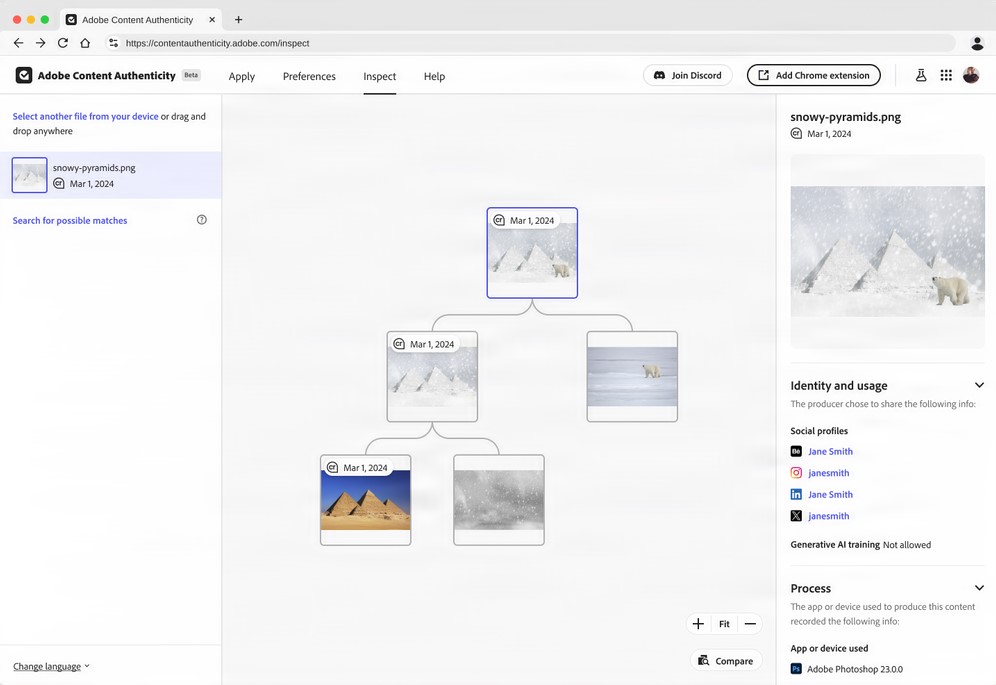
Adobe is launching a new web application that will allow creative people to add metadata to their work and protect it from unwanted use by artificial intelligence (AI).
The web application, dubbed Content Authenticity, provides a centralised way to add metadata – or ‘power labels’ – to images, video and audio files with information including creator, creation process and editing information.
The app allows Content Credentials to be applied in bulk, simplifying the process of attaching data to digital works. This will not only help you get authorship, but also protect your works from unauthorised use or distortion.

A key feature of the app is the ability to exclude content from being used to train generative AI models.
The metadata added by the app is difficult to remove and should be preserved even in screenshots. To increase transparency, Adobe has introduced the Inspect tool and an extension for Google Chrome to help verify the credentials of any content encountered online. Even if the content’s origin information is removed during the distribution process, Adobe’s combination of digital fingerprints, invisible watermarks and cryptographic metadata will help keep those credentials intact, providing greater protection and trust in the content being created.
Some social media platforms, such as LinkedIn, already support the display of content credential labels on images created with the appropriate tools or software.
Content Authenticity will be released as a public beta in the first quarter of 2025 and will not require an Adobe subscription.
